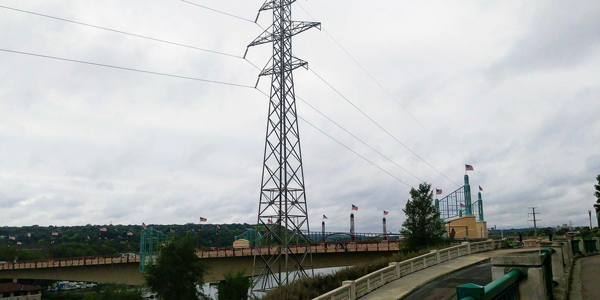By Amanda Durish Cook
CARMEL, Ind. — MISO will next month submit two filings with FERC to further refine its new generation interconnection process, while a third filing early next year will seek to facilitate connections for merchant HVDC lines, the RTO said last week.
MISO Manager of Resource Interconnection Neil Shah said the two near-term filings — one to limit the amount of time interconnection customers can change their megawatt values and the other to update the interconnection request form — serve as a “clean up” to implement details the RTO missed in its filing to redesign the queue.
The first revision would shorten the period for generation owners to change the capacity volume associated with network resource interconnection service (NRIS), moving the final selection to the second decision point in the queue rather than just before MISO begins an interconnection facilities study.
The second change would update the interconnection request form that prospective generation owners fill out upon entering the queue to include options for external NRIS and MISO’s fast-track request option for small generating facilities.
Shah said he did not expect the filings to elicit protests from stakeholders, who offered no public comment on the changes during a Nov. 15 Planning Advisory Committee meeting.
Wind on the Wires’ Natalie McIntire said she hoped the filings were as harmless as Shah characterized. “It’d be nice to finally have some queue changes that are uncontested,” she joked.
The apparently benign queue changes come as some stakeholders are already calling for a fundamental reconsideration of the interconnection queue not even a year after the RTO rolled out a redesign of the process.
Earlier this month, EDF Renewables asked MISO to consider a two-stage queue instead of the RTO’s selected three-stage design, while FERC denied a request to rehear its approval of the new design, which generation developers said should include a fast-tracked queue for vetted projects. (See EDF Asks MISO to Revisit Queue Overhaul.) EDF will return to the Steering Committee in January to make its case for a streamlined queue.
HVDC Interconnection
Another interconnection-related filing in January or February would revise MISO’s Tariff to allow merchant HVDC lines to inject energy into the RTO’s transmission system at certain points of connection. Under the proposed rules, merchant HVDC would advance through the queue much like other interconnection customers and earn injection rights. However, MISO would draw a distinction between “injection rights” and “interconnection rights.” A merchant HVDC owner could only secure injection rights, and its associated generator must also line up in the queue and reference the HVDC injection rights. MISO would then convert the injection rights into interconnection rights for the generator without further queue studies. Only then would the rights be usable to offer energy or capacity into the MISO markets.
In response to a question by Indiana Utility Regulatory Commission adviser Dave Johnston, Shah said there are currently HVDC projects on hold in the queue, most of which are requesting injection rights into MISO.
WOW consultant Rhonda Peters said it’s still unclear how MISO will treat a merchant HVDC line wishing to withdraw from the system and inject into another balancing authority.
“As of now, these procedures are not supported,” Peters said.
Shah said some existing Tariff provisions would allow for withdrawal. “There’s some work needed, but it’s mostly educational in my mind,” he said.
Peters countered that the “thousands of megawatts” that HVDC lines are able to move is “unprecedented” and MISO’s current $4,000/MW upfront fee for the definitive planning phase is prohibitively high and will hinder the connection of projects. She asked for MISO to consult with other RTOs about their merchant HVDC interconnect policies.
Shah said he would take those suggestions into consideration and asked stakeholders to provide other input by Dec. 1. More discussion on merchant HVDC interconnection procedures is planned for the December PAC meeting.





